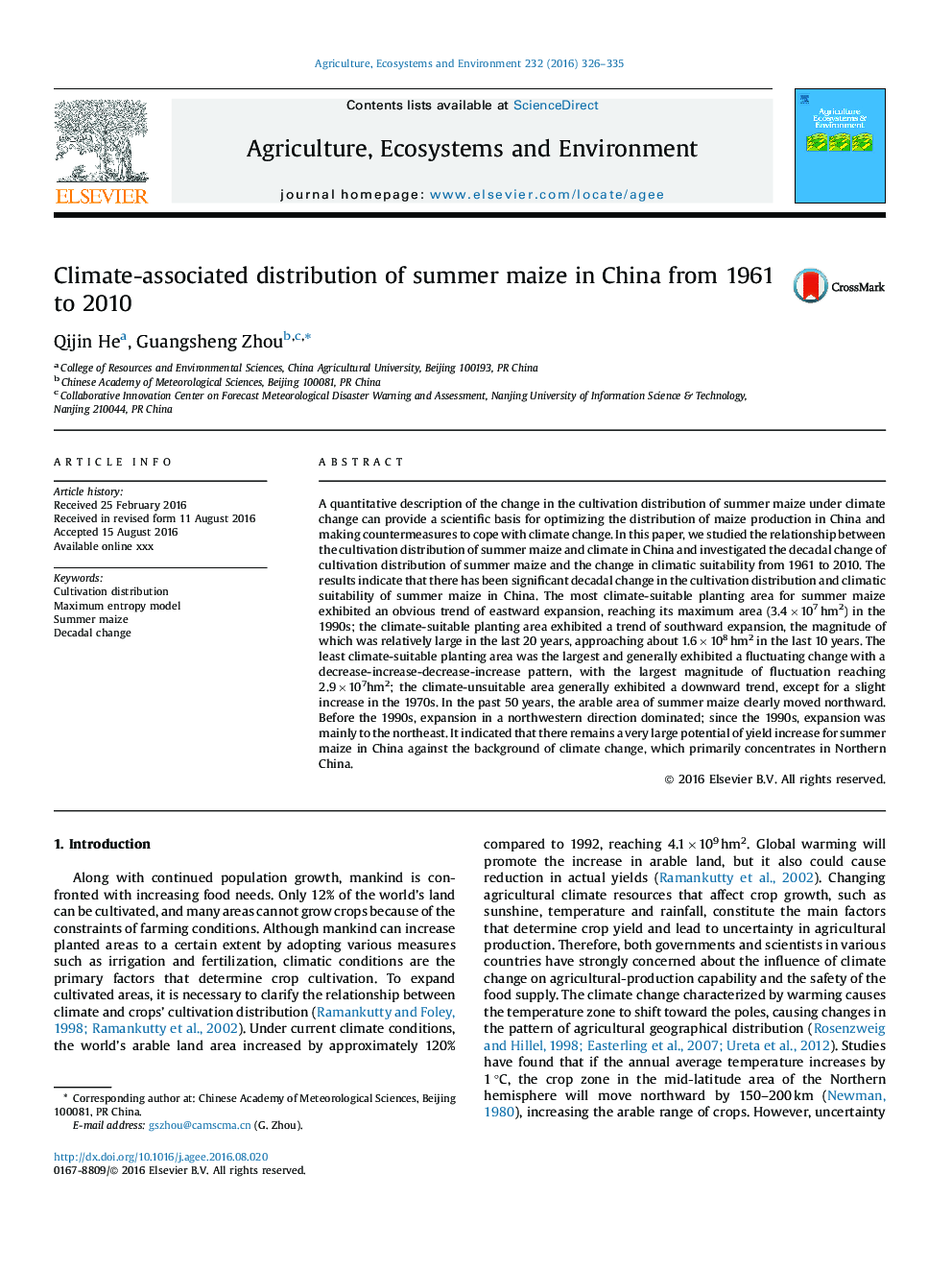| Article ID | Journal | Published Year | Pages | File Type |
|---|---|---|---|---|
| 8487333 | Agriculture, Ecosystems & Environment | 2016 | 10 Pages |
Abstract
A quantitative description of the change in the cultivation distribution of summer maize under climate change can provide a scientific basis for optimizing the distribution of maize production in China and making countermeasures to cope with climate change. In this paper, we studied the relationship between the cultivation distribution of summer maize and climate in China and investigated the decadal change of cultivation distribution of summer maize and the change in climatic suitability from 1961 to 2010. The results indicate that there has been significant decadal change in the cultivation distribution and climatic suitability of summer maize in China. The most climate-suitable planting area for summer maize exhibited an obvious trend of eastward expansion, reaching its maximum area (3.4Â ÃÂ 107Â hm2) in the 1990s; the climate-suitable planting area exhibited a trend of southward expansion, the magnitude of which was relatively large in the last 20 years, approaching about 1.6Â ÃÂ 108Â hm2 in the last 10 years. The least climate-suitable planting area was the largest and generally exhibited a fluctuating change with a decrease-increase-decrease-increase pattern, with the largest magnitude of fluctuation reaching 2.9Â ÃÂ 107hm2; the climate-unsuitable area generally exhibited a downward trend, except for a slight increase in the 1970s. In the past 50 years, the arable area of summer maize clearly moved northward. Before the 1990s, expansion in a northwestern direction dominated; since the 1990s, expansion was mainly to the northeast. It indicated that there remains a very large potential of yield increase for summer maize in China against the background of climate change, which primarily concentrates in Northern China.
Related Topics
Life Sciences
Agricultural and Biological Sciences
Agronomy and Crop Science
Authors
Qijin He, Guangsheng Zhou,
